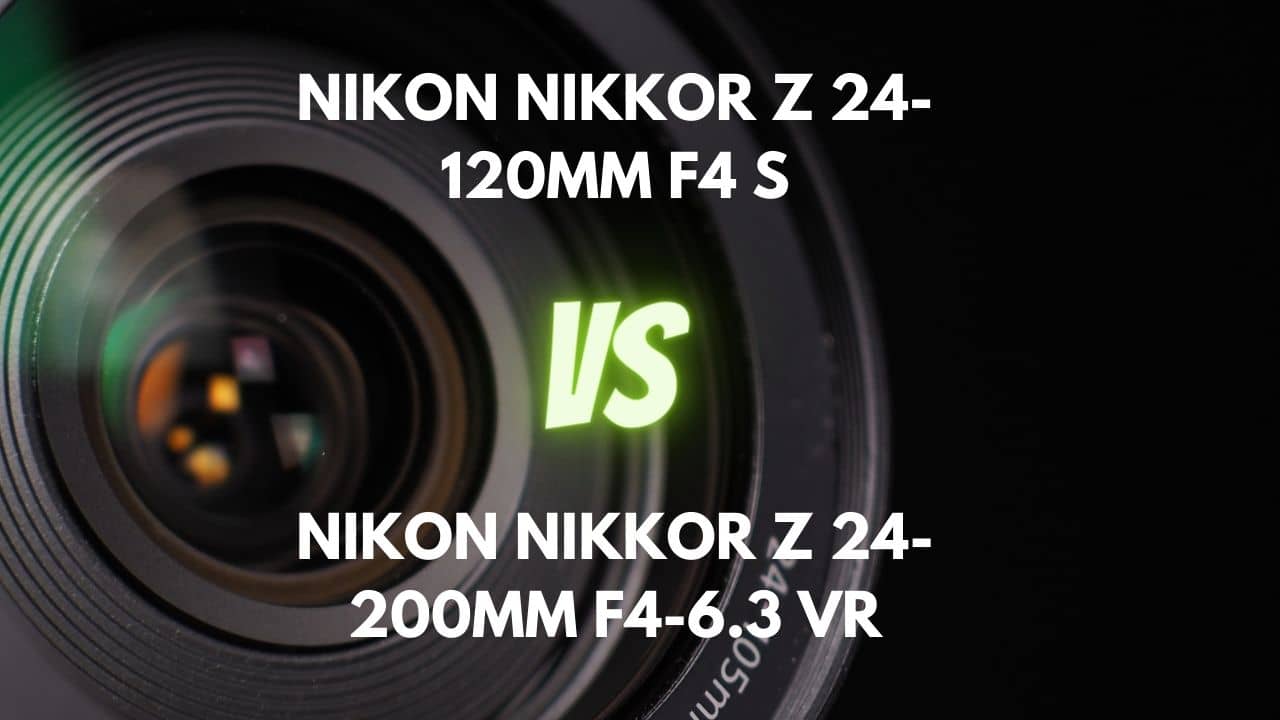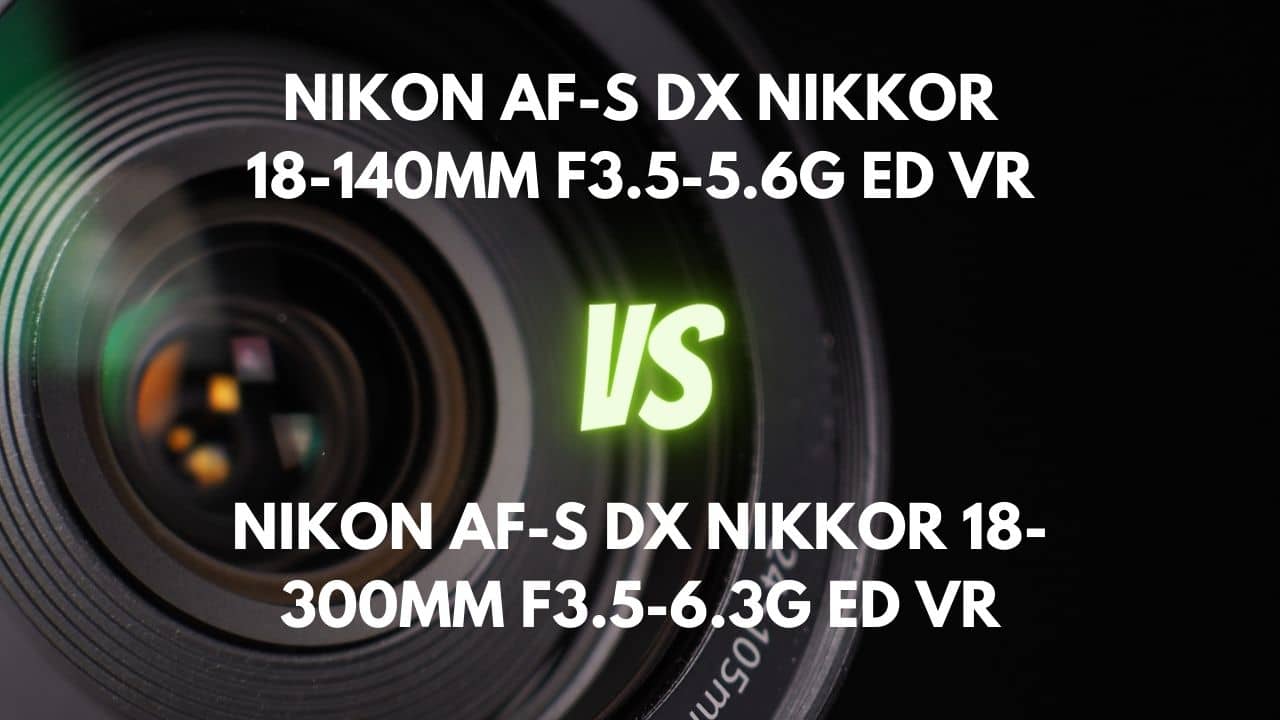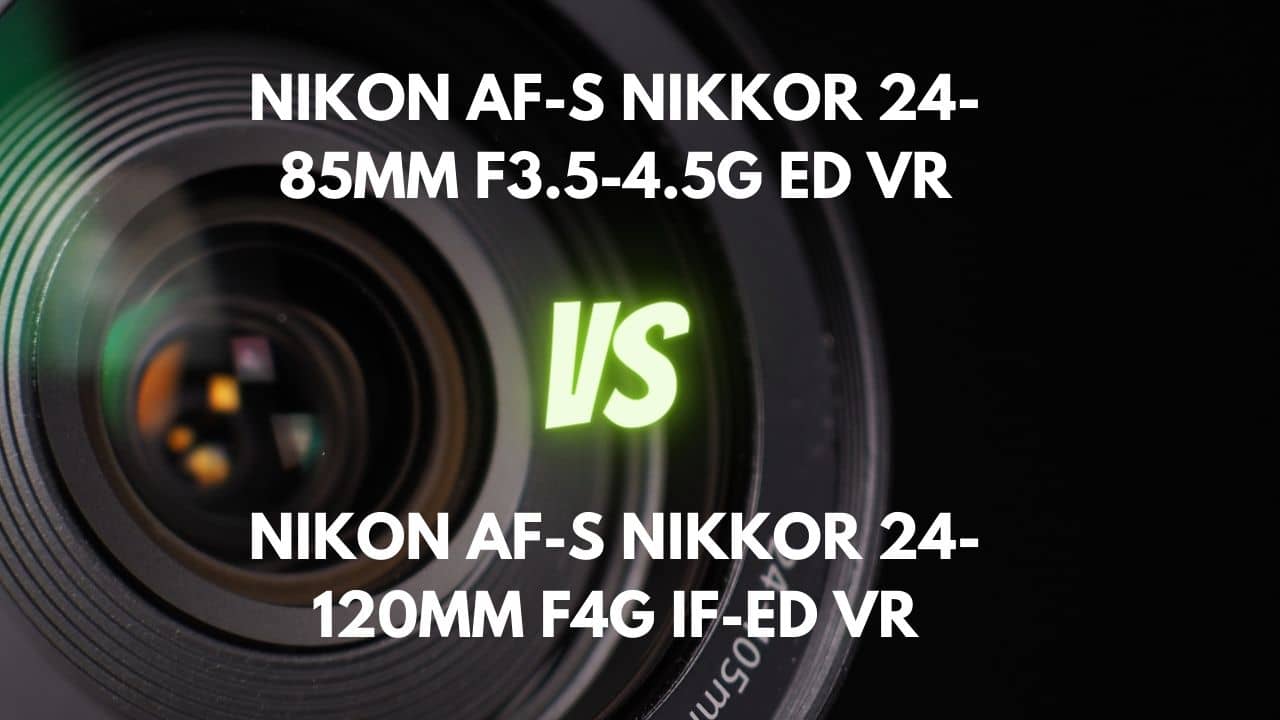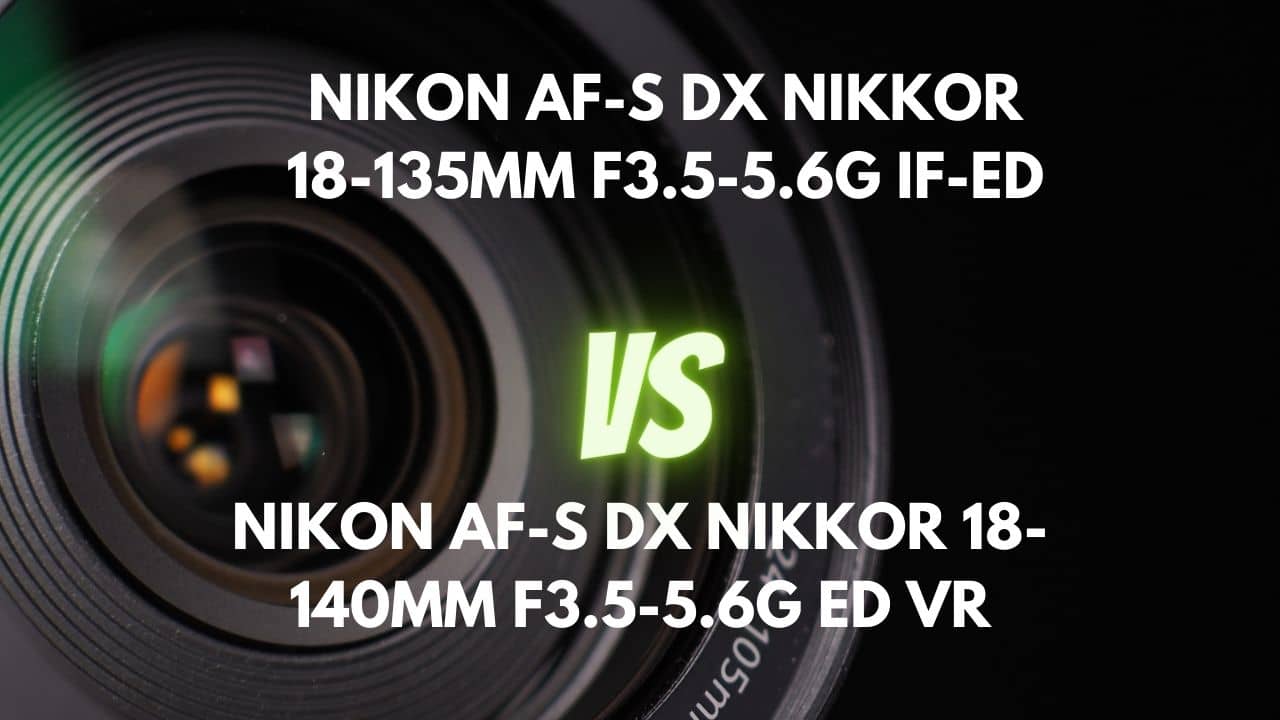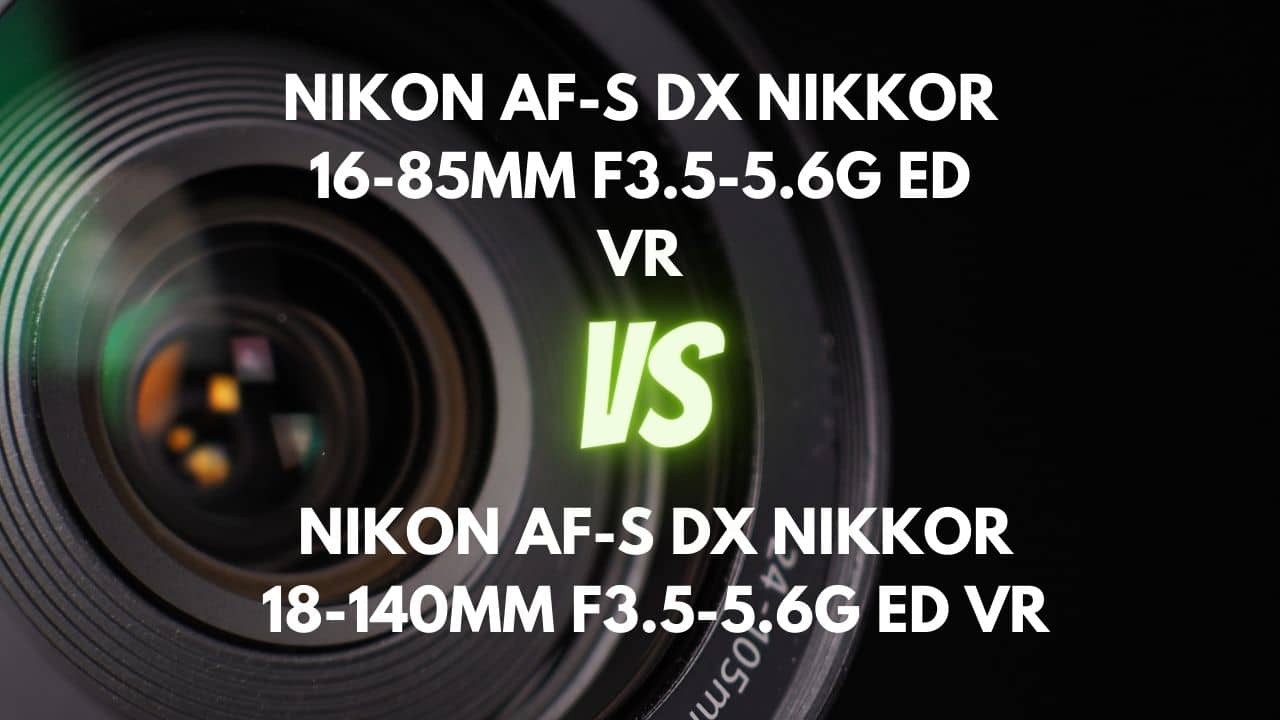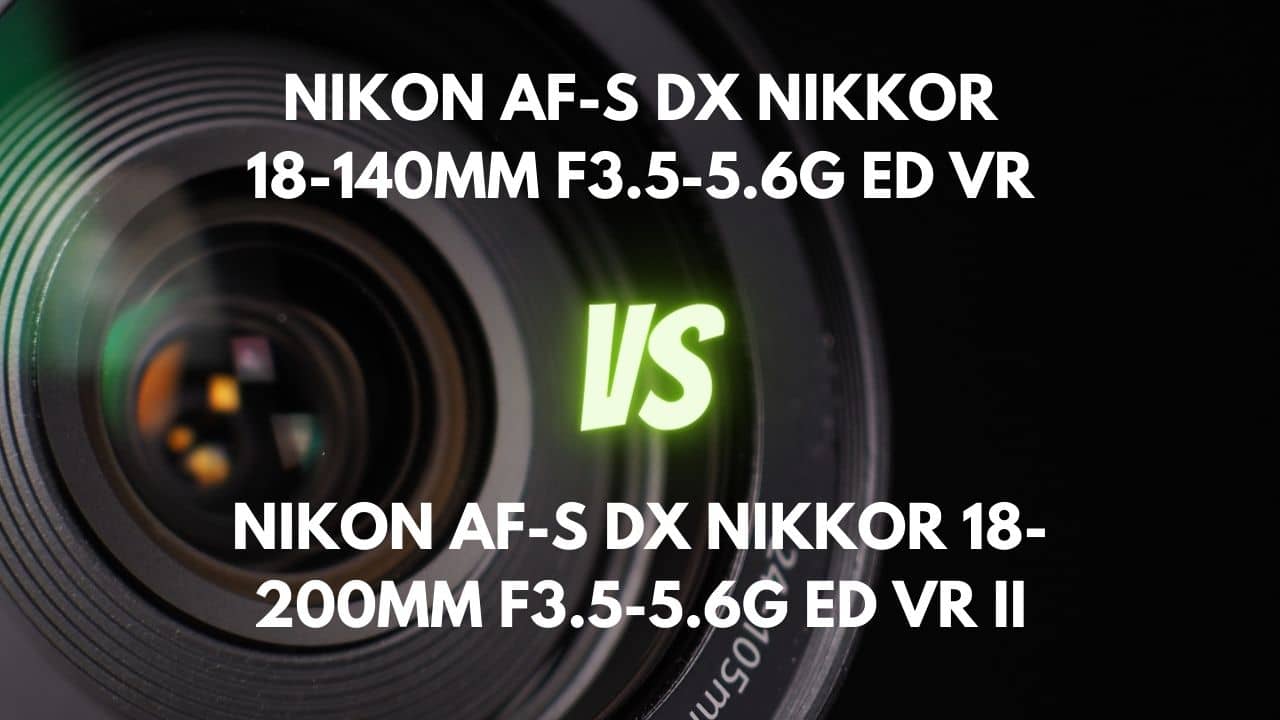Are you on the hunt for the perfect lens to elevate your photography game? Look no further! In this comprehensive comparison, we’ll delve into the fascinating world of two exceptional lenses: the versatile 18-140mm and the powerful 24-120mm.
Both lenses offer impressive capabilities that cater to a wide range of photography genres, from captivating landscapes and stunning architecture to intimate portraits and dynamic action shots.
Understanding the unique characteristics of these two lenses is key to unlocking your full creative potential. We will explore the strengths and weaknesses of each lens, showcasing their performance in various scenarios such as low light, depth of field control, image quality, and more.
Our in-depth analysis will provide you with valuable insights and help you make an informed decision on which lens is the perfect match for your photography style and ambitions.
Join us as we embark on this exciting journey to discover the benefits of the Nikon Z DX 18-140mm f/3.5-6.3 and Nikon Z 24-120mm f/4, and how they can help you capture those breathtaking moments and transform your photography into an extraordinary visual experience.
Don’t miss out on this opportunity to elevate your craft and unleash your creativity!
Overview
| Nikon NIKKOR Z DX 18-140mm F3.5-6.3 VR | Nikon NIKKOR Z 24-120mm F4 S | |
|---|---|---|
| Max Aperture | F3.5-6.3 | F4 |
| Aperture Type | Variable | Fixed |
| Focal Range (mm) | 18-140 | 24-120 |
| Mount Type | Nikon Z | Nikon Z |
| Max Format | APS-C / DX | 35mm FF |
| Zoom Ratio (X) | 7.8 | 5 |
The Nikon Z DX 18-140mm f/3.5-6.3 is a variable aperture lens with a 35mm equivalent focal length of 27-210mm. Its 35mm equivalent maximum aperture of f/5.3-9.4. Its focal length makes it suitable for various photography genres, from wide-angle to telephoto.
The zoom ratio of 7.8 provides a wide range of compositional options. However, the variable aperture means that the maximum aperture will change as you zoom in or out, which can impact low light performance and depth of field control. The 18-140mm lens is designed for APS-C / DX format cameras.
On the other hand, the Nikon Z 24-120mm f/4 is a fixed aperture lens with a maximum aperture of f/4. It has a focal range of 24-120mm, making it suitable for wide-angle and moderate telephoto photography. The constant maximum aperture of f/4 offers better low light performance and depth of field control across the entire zoom range. The 5.0 zoom ratio provides flexibility in composition and framing. The 24-120mm lens is designed for 35mm full-frame (FF) format cameras.
In summary, the 18-140mm lens offers a more extensive focal range and higher zoom ratio, making it more versatile for various photography genres. However, its variable aperture may limit its low light performance and depth of field control. The 24-120mm lens provides better low light performance and more consistent image quality with a fixed aperture but has a smaller focal range and zoom ratio.
Considering the factors mentioned above, the 24-120mm lens is superior in terms of low light performance, depth of field control, and overall image quality due to its fixed aperture. However, if versatility and a wider focal range are your priorities, the 18-140mm lens may be a better choice.
Design and Ease of Use
| Nikon NIKKOR Z DX 18-140mm F3.5-6.3 VR | Nikon NIKKOR Z 24-120mm F4 S | |
|---|---|---|
| Diameter x Length (mm) | ⌀73×90mm | ⌀84×118mm |
| Weight (gr) | 315 | 630 |
| Filter Thread (mm) | 62 | 77 |
| Weather Sealing | Yes | Yes |
| Zoom Method | Rotary (extending) | Rotary (extending) |
| Distance Scale | No | No |
| DoF Scale | No | No |
| Hood Supplied | No | Yes |
| Hood Code | HB-101 | HB-102 |
Comparing the Nikon Z DX 18-140mm f/3.5-6.3 and the Nikon Z 24-120mm f/4, there are some notable differences in terms of size and weight.
The 18-140mm lens is smaller, with a diameter of 73mm and a length of 90mm, making it more compact than the 24-120mm lens, which measures 84mm in diameter and 118mm in length. Additionally, the 18-140mm lens is significantly lighter, weighing only 315 grams compared to the 24-120mm lens’s weight of 630 grams. Both lenses use a rotary (extending) zoom method.
Size and weight are important factors in photography, as they impact portability, balance, discreetness, storage, and lens swapping. The 18-140mm lens’s smaller size and lighter weight make it more portable, easier to handle in various shooting situations. Its compactness also allows for more efficient storage and quicker lens swapping.
While the extending rotary zoom method employed by both lenses has its pros and cons, the choice between internal and extending rotary zoom largely depends on individual preferences and shooting needs.
In conclusion, the 18-140mm lens is superior in terms of size and weight, making it a better option for photographers who prioritize portability and balance.
Lens Mount and Barrel
When comparing the Nikon Z DX 18-140mm f/3.5-6.3 and Nikon Z 24-120mm f/4, there are distinct differences in their lens mount and barrel construction.
The 18-140mm lens features a plastic lens mount, which contributes to its lightweight and portable design. However, the lack of a rubber gasket for weather-sealing and the plastic construction may not provide the same durability as a metal mount. The lens barrel of the 18-140mm is also made of plastic, with a rough knurled texture for an easy grip and an inner barrel that extends when zooming.
On the other hand, the 24-120mm lens has an aluminum lens mount, a type of metal that offers more durability. Additionally, the mount includes a rubber gasket for weather sealing. The lens barrel of the 24-120mm is constructed from a mix of materials, including anodized aluminum and plastic components.
The finish is black plastic, with rubber-covered sections for better grip. When zooming, the lens extends substantially using a dual telescoping barrel, which could be more vulnerable to damage in the long run compared to single extending barrels or internal zoom designs.
In conclusion, the 24-120mm lens has a superior lens mount and barrel construction due to its combination of metal and weather-sealing features. However, the 18-140mm lens may still be a suitable choice if you prioritize portability and affordability.
Weather Sealing
Comparing the two lenses, the Nikon Z DX 18-140mm f/3.5-6.3 has some weather sealing, providing protection against dust and moisture. However, Nikon explicitly states that it is not guaranteed to be dust- and drip-resistant in all situations and under all conditions. It lacks a weather-seal gasket at the lens mount, which may make it more vulnerable to water and dust ingress.
On the other hand, the Nikon Z 24-120mm f/4 boasts robust weather sealing with a rubber gasket at the lens mount and internal seals at the rings, switches, and front of the barrel. Additionally, it features a fluorine coating on the front element to resist dirt and smudges.
While both lenses offer some degree of weather sealing, the 24-120mm lens stands out with its comprehensive sealing system that can withstand harsher conditions, even rainstorms. This lens is ideal for photographers who frequently shoot in challenging environments, offering better durability and performance. The 18-140mm lens still provides basic protection against dust and moisture but may require extra care in adverse weather conditions.
In conclusion, the 24-120mm lens offers superior weather sealing compared to the 18-140mm lens, making it a more suitable choice for photographers who need a reliable lens capable of performing well in various weather conditions.
Rings
The Nikon Z DX 18-140mm f/3.5-6.3 features two rings: a zoom ring and a combined control and focusing ring. The zoom ring, located towards the front of the lens, is easy to grip with its rubber ridges and provides smooth rotation. It is marked at 18mm, 24mm, 35mm, 50mm, 70mm, 100mm, and 140mm.
The narrow control ring, situated closer to the camera body, can be programmed to adjust various settings such as focus, aperture, ISO, or exposure compensation when the camera is in autofocus mode. It is electronically operated, smooth, and silent, but may be overly sensitive in some situations.
In contrast, the Nikon Z 24-120mm f/4 features three rings: focus, zoom, and control. The zoom ring, marked at 24, 28, 35, 50, 70, 85, and 120mm, is stiff but not loose. The control ring is knurled and customizable to change aperture, exposure compensation, or ISO sensitivity, while the focusing ring is rubberized, offering linear or nonlinear response that can be configured in the camera menu. All the rings on this lens are ridged and tactile, contributing to its high-quality and sturdy feel, and the weight distribution is well-balanced.
Comparing the two lenses, the 24-120mm offers more customization and control, with a dedicated focus ring, zoom ring, and control ring, which allows for more precise adjustments. The 18-140mm lens has a combined control and focusing ring, which may be less intuitive for some photographers. Both lenses lack a windowed distance scale and depth-of-field indicator, but the 24-120mm has a slight edge in overall design and ergonomics.
In conclusion, the 24-120mm lens offers superior ring design and customization, making it a more appealing choice for photographers who seek precise control and a high-quality feel when adjusting focus, zoom, or other settings.
Switches/Buttons
The Nikon Z DX 18-140mm f/3.5-6.3 lacks dedicated switches or buttons on the barrel, instead relying on a customizable lens control ring closest to the camera for adjustments. This control ring can be set to adjust focus, aperture, exposure compensation, ISO, or be set to inert.
The lens stabilization is managed through the camera menu’s Optical VR option, as there is no stabilizer switch on the lens. Additionally, the lens does not have an AF/MF switch, and manual focus can be accessed by simply grabbing the control ring at any time.
On the other hand, the Nikon Z 24-120mm f/4 features an AF/MF switch located towards the rear of the lens, facilitating quick and easy selection between autofocus and manual focus. It also has a customizable L-Fn (Lens-function) button that can perform various tasks, such as AF-ON, metering settings, subject tracking, and more. The switch and button are generally easy to locate and operate, with the L-Fn button having a rubberized surface for effortless operation.
In conclusion, the 24-120mm lens offers a more user-friendly experience with its dedicated switches and buttons, providing quicker access to essential controls. While the 18-140mm lens relies on customization through the control ring, the 24-120mm’s dedicated AF/MF switch and L-Fn button make it a superior choice in terms of Switches/Buttons functionality.
Filter Thread
The Nikon Z DX 18-140mm f/3.5-6.3 features a 62mm plastic filter thread on the front of the lens, which, although not ideal, gets the job done. The front element and filter thread do not rotate during focusing, making it convenient for use with polarizers and other filters.
On the other hand, the Nikon Z 24-120mm f/4 has a larger 77mm plastic filter thread, which is also known not to rotate during focusing. This lens is user-friendly when working with filters, including standard rotating polarizers or grad filters at 24mm without vignetting on full-frame cameras. However, the filter ring is also plastic, so caution should be exercised when mounting screw-on filters.
The 24-120mm lens with its 77mm filter thread size offers a better balance. This is because 77mm is a common size, providing a wider range of filters at a reasonable price, while also minimizing vignetting and potential image quality degradation caused by stacked filters.
In conclusion, the 24-120mm lens with its 77mm filter thread proves superior when considering factors like compatibility, availability, and cost. Although both lenses have plastic filter threads, the 24-120mm lens offers a better balance and versatility in filter use, making it a more appealing choice for photographers.
Lens Hood
The Nikon Z DX 18-140mm f/3.5-6.3 does not include a lens hood in the package, requiring a separate purchase of the optional HB-101 hood. In contrast, the 24-120mm lens comes with a petal-shaped, plastic lens hood included in the package. The hood features a reversible design for easy storage. Although the finish may feel flimsy, it can be screwed onto the lens smoothly.
In conclusion, the 24-120mm lens is superior in terms of lens hood, as it comes included in the package and features a practical design for easy storage. This added value can make a difference for photographers looking for better protection, reduced flare, and overall convenience.
Focusing and Optical Stabilization
| Nikon NIKKOR Z DX 18-140mm F3.5-6.3 VR | Nikon NIKKOR Z 24-120mm F4 S | |
|---|---|---|
| Autofocus | Yes | Yes |
| AF Motor | Stepper motor | Stepper motor |
| Rotating Front Element | Does not rotate on focusing | Does not rotate on focusing |
| Min Focus Distance | 0.2m(18mm);0.4m(140mm) | 0.35m |
| Max Magnification (X) | 0.33 | 0.39 |
| Full-Time Manual Focus | Yes | Yes |
| Focus Method | Internal | Internal |
Focusing Performance
When comparing the Nikon Z DX 18-140mm f/3.5-6.3 and the 24-120mm lenses in terms of focusing performance, both lenses offer fast and accurate autofocus systems suitable for a variety of shooting situations.
The 18-140mm lens has an impressive autofocus acquisition speed and smooth manual focus override, making it a versatile choice for different scenarios. This lens also exhibits minimal focus breathing, which is beneficial for video work.
On the other hand, the Nikon Z 24-120mm f/4 provides excellent focusing speed and maintains accuracy in low-light situations. Its manual focus override is easy to use, and the lens has minimal focus breathing as well. This lens’s performance ensures reliability and efficiency in various shooting conditions.
In conclusion, both lenses offer superior focusing performance. The 18-140mm lens might be more suitable for those who prioritize versatility and smooth manual focus action, while the 24-120mm lens could be a better choice for photographers who require fast and accurate autofocus in low-light situations.
Optical Stabilization
The Nikon Z DX 18-140mm f/3.5-6.3 features built-in optical image stabilization, known as Vibration Reduction (VR), which offers 5 stops of compensation. This effective stabilization system allows you to achieve blur-free results at various shutter speeds, such as 1/4-second at 140mm and 1/2-second at 18mm. The system operates silently and seamlessly, making it suitable for both stills and video shooting. Standard and sport settings are available and can be controlled from within the camera menus.
On the other hand, the Nikon Z 24-120mm f/4 does not have built-in optical image stabilization. However, it works with in-camera stabilization on Nikon Z full-frame cameras, providing up to 4 stops of compensation.
In conclusion, the 18-140mm lens is superior in terms of optical stabilization, as it features an effective built-in VR system that provides 5 stops of compensation. This advantage is particularly beneficial for handheld shooting in various conditions, such as low-light situations or when recording video. While the 24-120mm lens relies on in-camera stabilization, the built-in VR system of the 18-140mm lens offers an edge in terms of performance and versatility.
Image Quality
| Nikon NIKKOR Z DX 18-140mm F3.5-6.3 VR | Nikon NIKKOR Z 24-120mm F4 S | |
|---|---|---|
| Special Elements | ED and Aspherical elements | 3 ED elements, 3 aspherical elements, 1 aspherical extra-low dispersion |
| Diaphragm Blades | 7 | 9 |
Aberration
The Nikon Z DX 18-140mm f/3.5-6.3 exhibits minimal chromatic aberration, as it is well-controlled in both JPEG and Raw files. Chromatic aberration is only noticeable in very high contrast areas. In terms of spherical aberration, the lens does exhibit mild spherochromatism, which can cause colored fringes on out-of-focus highlights. However, this issue is not severe and tends to diminish when the lens is stopped down.
On the other hand, the Nikon Z 24-120mm f/4 performs well in controlling chromatic aberration, with only mild lateral and longitudinal chromatic aberration visible under certain conditions. There is no noticeable spherochromatism or axial color, and the lens is effective in suppressing false color.
In conclusion, both lenses show a good level of control over aberrations. However, the 24-120mm lens has a slight edge over the 18-140mm lens, as it effectively suppresses false color and displays no noticeable spherochromatism or axial color. While the 18-140mm lens handles chromatic aberration well, its mild spherochromatism may be a minor concern for some photographers. Overall, the 24-120mm lens performs slightly better in terms of aberration control.
Sharpness
The Nikon Z DX 18-140mm f/3.5-6.3 exhibits impressive sharpness throughout most of its zoom range. At 18mm, the center sharpness is outstanding, while corner sharpness improves from wide apertures to f/5.6-11. As the focal length increases, resolution decreases slightly but remains very good at 75mm and acceptable at 140mm.
Wide open aperture performance is commendable, but using apertures in the f/16-40 range will result in softer images. Stopping down generally improves sharpness across the frame, with the sharpest results typically observed at f/5.6 to f/11, depending on the focal length.
In contrast, the Nikon Z 24-120mm f/4 exhibits exceptional sharpness across its focal length range, with outstanding center sharpness throughout. Corner sharpness is generally impressive but may not be as sharp as the center, with the best results obtained from f/5.6 through to f/16.
When shot wide open at f/4, the lens still delivers ultra-sharp corner-to-corner results, improving even further when stopped down. The sharpest aperture is typically in the range of f/4 to f/8, depending on the focal length, while diffraction starts to affect sharpness at smaller apertures like f/16 and f/22.
In conclusion, both lenses offer remarkable sharpness, but the 24-120mm lens takes the lead with its exceptional performance across the entire focal length range and superior corner-to-corner results. The 18-140mm lens delivers commendable sharpness, but its performance is slightly outmatched by the 24-120mm lens. Thus, if sharpness is a top priority, the 24-120mm lens would be the superior choice.
Bokeh Quality
The Nikon Z DX 18-140mm f/3.5-6.3 employs an iris diaphragm with 7 rounded blades, resulting in quite appealing bokeh, especially at the longer telephoto focal lengths. Defocused backgrounds are achievable, and in the right situation, they can melt into nothing, while highlights are generally soft-edged. Despite the lens’s impressive performance, defocused points of light may exhibit the onion skin effect, which manifests as concentric circles resulting from the molded aspheric lens elements. Overall, the bokeh quality is quite nice.
On the other hand, the Nikon Z 24-120mm f/4 produces a bokeh that varies in quality depending on the focal length and aperture settings. At wider apertures and longer focal lengths, the bokeh appears fairly smooth and pleasing, with good subject separation. However, the lens may exhibit some onion skin effects in specular highlights and soap bubble bokeh in certain situations. Additionally, the bokeh may appear less smooth or creamy when shooting at shorter focal lengths or smaller apertures.
In conclusion, both lenses offer decent bokeh quality, but the 18-140mm lens seems to have a slight edge, particularly at longer focal lengths. While the 24-120mm lens can produce pleasing bokeh in certain situations, it is more variable and can be less consistent. Therefore, if bokeh quality is an important factor in your decision, the 18-140mm lens would be the better choice.
Flare/Ghosting
The Nikon Z DX 18-140mm f/3.5-6.3 demonstrates good flare suppression, even when shooting directly into bright light sources or with bright light sources prominently in the frame. It performs well at wider apertures and even without the benefit of a lens hood. There is no significant problem with flare or ghosting, even when using rotating polarizer and grad filters.
In contrast, the Nikon Z 24-120mm f/4 has been tested against strong light sources and has shown good resistance against flare and ghosting, particularly on the short end. Coatings applied to the front glass make it even more resistant against these artifacts, making it a great lens for shooting in high dynamic range scenes or towards bright points of light.
In conclusion, both lenses exhibit good performance in terms of flare and ghosting suppression. However, the 24-120mm lens have a slight advantage due to the additional coatings applied to the front glass, providing even better resistance against these artifacts.
Vignetting
The Nikon Z DX 18-140mm f/3.5-6.3 exhibits some vignetting when used at wider apertures, particularly noticeable when the aperture is set wide open at 18mm. As you stop down to f/5.6 or f/8, the vignetting reduces. The amount of vignetting also varies at different focal lengths. However, it is not a significant problem and can be easily corrected in post-processing, or left as is for a creative effect.
On the other hand, the Nikon Z 24-120mm f/4 exhibits some vignetting, particularly at wider apertures like f/4, but it is not particularly noticeable or objectionable in most everyday or busy scenes. The vignetting can be easily corrected by turning on in-camera vignetting correction or using Lightroom’s vignetting correction profile.
Vignetting is mild with Nikon’s built-in vignette control, which can be adjusted to taste via the camera menu. At longer focal lengths, any vignetting goes away. Overall, the lens’s vignetting is manageable and should not be a major concern for most photographers.
In conclusion, both lenses exhibit vignetting to some extent, but the 24-120mm lens appears to handle it better.
Distortion
The Nikon Z DX 18-140mm f/3.5-6.3 experiences significant distortion that necessitates in-camera corrections, which cannot be turned off. The distortion is so pronounced that the lens is practically unusable without these corrections. However, once corrected, the distortion and chromatic aberrations are well-controlled in both JPEG and raw files.
In contrast, the Nikon Z 24-120mm f/4 exhibits some distortion, particularly at the wide end of the zoom range, with noticeable barrel distortion. Nikon applies automatic distortion correction profiles to both JPEG and raw files, helping to minimize the issue. Additionally, post-processing software like Lightroom and Photoshop offer lens correction tools to further reduce distortion.
Final Verdict
After taking into account all the conclusions drawn from each comparison, the final verdict is as follows:
The Nikon Z 24-120mm f/4 excels in various aspects, including low light performance, depth of field control, overall image quality, construction quality, weather sealing, focusing performance, aberration control, sharpness, flare and ghosting suppression, and vignetting control.
On the other hand, the Nikon Z DX 18-140mm f/3.5-6.3 stands out in terms of size and weight, versatility, optical stabilization, and bokeh quality.
While both lenses have their strengths, the 24-120mm lens seems to be the better overall choice due to its superior performance in multiple aspects. However, if versatility, a wider focal range, and optical stabilization are more important to you, the 18-140mm lens may be a more suitable option.

